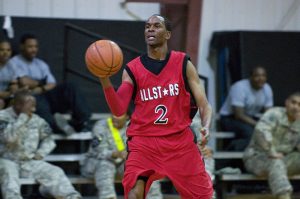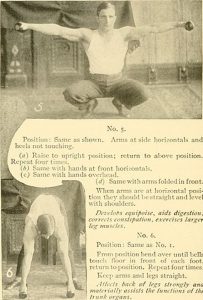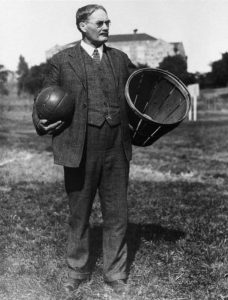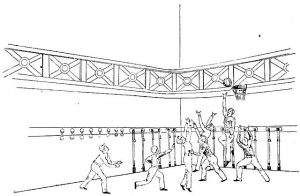March Madness, the biggest collegiate basketball tournament of the year, is in full swing. Some might say the entire game of basketball is somewhat “mad,” an invented game of known origins. I use “mad” in the English sense: being of unsound mind or mad as a March hare. [More on the hare, later.] In NCAA basketball, the madness is in the victories of low seeded teams who aren’t expected to win.
THE GAME
Dr. James Naismith invented basketball in 1891 to cure boredom among physical education students in the School for Christian Workers. The New England winter in Springfield, Massachusetts kept them from their usual strenuous outdoor games. Indoor activities of calisthenics and gymnastics weren’t team sports. They didn’t emphasize quick movements and agility.
Naismith’s boss gave him two weeks to come up with an indoor team sport. He based his new game on “Duck-on-a-Rock” in which players threw stones to hit a target placed on a large boulder.
Naismith nailed two peach baskets to a balcony railings ten feet above opposite ends of the gym floor. A soccer ball was pressed into service, and the game began.
Modifications followed quickly. It was too cumbersome to stop play after every goal so the referee could climb a ladder and retrieve the ball. So the baskets lost their bottoms. In 1896 backboards appeared behind the baskets so fans couldn’t interfere with the ball. Open rims replaced the baskets and nets slowed down the ball.
The game was a hit. High school and collegiate teams formed throughout the country.
THE MADNESS BEGINS
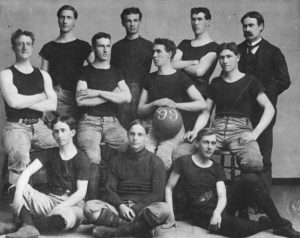
In 1908 the Illinois High School Association began a statewide basketball tournament. In 1939 one of the state officials, Henry Porter, wrote an article for their in-house magazine. He called it “March Madness.”
“A little March madness may complement and contribute
to sanity and help keep society on an even keel.”*
In 1982 a CBS sports broadcaster used the term during network coverage of an NCAA tournament. “March Madness” began to spread. In 1989 the Illinois High School Associated applied to trademark “March Madness.”
The IHSA sued the NCAA in 1996 to stop an NCAA corporate partner from distributing a CD-ROM game with the words March Madness in the title. The NCAA argued it had a common law trademark on the phrase and could therefore license it. The court upheld the NCAA argument.
MARCH MADNESS IS NOW
March Madness 2017 began March 12 with Selection Sunday. The single elimination tournament is between 68 Division-1 college basketball teams. The champions from the 32 Division-1 conferences have automatic slots. An NCAA Select Committee names the remaining 36 teams. These are then divided into four regions with a single elimination bracket. Each team is seed ranked. Madness occurs when a lower ranked team defeats a team ranked significantly higher or manages to stay in the competition longer than expected. Eventually the teams are reduced to a Sweet Sixteen and then a Final Four. Finally one team takes all.
MORE MADNESS
Publicity for small schools with a low ranking that can defeat a top ranking school or stay in competition longer than expected is extensive. Their public profile goes up. Google searches spike. In 2013, for example, Wichita State University saw a 29 percent application increase after its “Shockers” made it into the Final Four as the Number Nine seed. Successful schools have increased sales for their sports related apparel. And, enthusiastic alumni often increase their donations.
MADDEST OF ALL
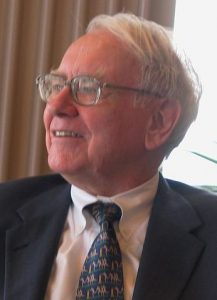 Warren Buffett, CEO of Berkshire Hathaway offers lucrative opportunities to basketball fans. In 2014 Buffett said he would give $1 billion to anyone who could correctly pick the 63 winners in March Madness. Winnings would be paid in annual installments of $25 million, or as a lump sum payment of $500 million. No one won the money, but Buffett accrued a public relations coup.
Warren Buffett, CEO of Berkshire Hathaway offers lucrative opportunities to basketball fans. In 2014 Buffett said he would give $1 billion to anyone who could correctly pick the 63 winners in March Madness. Winnings would be paid in annual installments of $25 million, or as a lump sum payment of $500 million. No one won the money, but Buffett accrued a public relations coup.
This year Buffett is running a contest for the 367,000 employees of Berkshire Hathaway. Any employee who can pick the Sweet Sixteen will win $1 million for life. Buffett will award $100,000 to the person that goes the furthest even if s/he doesn’t correctly name all sixteen. Last year two employees tied, each receiving $50,000.
MAD AS A MARCH HARE

Our final topic, as promised is the March hare. Truly mad or the victim of bad publicity?
The so-called March hare is a hare in the throws of mating season. The phrase has been in use since 1500. Though breeding season lasts from January through August, March is an unusual month. Normally nocturnal males become active during the day. Dominant males fight for status. Uninterested females fight off suitors. The hares stand upright and attack each other with their paws. When the female is ready, she initiates a chase until only one male remains.
WHAT THEN IS MARCH MADNESS?
March Madness. (noun) 1. Occurring in the month of March. 2. Unusual behavior as in the mating rituals of hares. 3. Activity which upsets the norm as in a low seeded collegiate basketball team defeating a better placed opponent. 4. A gamble on predicting which teams will go forward in an NCAA Division-1 basketball tournament
???
* Quoted by Brendan Koerner IN “Why is it called March Madness?” Slate. March 16, 2010.
Sign up for Sandra’s Newsletter and get “Out-Takes from Rama’s Labyrinth.” The newsletter comes out every Monday with a blog preview & any relevant book announcements. You can unsubscribe at any time. Your contact information won’t be given out. Sign up today for free “Out-Takes from Rama’s Labyrinth.”
Illustrations from Wikimedia Commons.
U.S. Army 1st Lt. Frankie Jackson, from Wilmington N.C., with 3-38th HRC, passes the ball as his team, the All Stars play against team Thunder Cats in the final game of the Garrison March Madness tournament held at the Camp Liberty field house March 18-27. Public Domain.
Calisthenics. 10 Minute Exercise. 1916. No Known Copyright Restrictions.
James Naismith. Public Domain.
Basketball print in The Triangle. Jan. 15, 1892. Public Domain.
First Basketball Team, University of Kansas. 1899. Public Domain.
Warren Buffett by Mark Hirschey. Creative Commons Attribution.
Hare by Bruno Liljefors. Public Domain.
History of Basketball. Sports. KnowHow.com.
History of Basketball. Kansas Heritage.
Kurt Badehauben. “Warren Buffett’s 2017 March Madness Bracket Contest: $1 Million a Year for Life.” Forbes. Feb. 28, 2017.
Kelly Phillips Erb. “Warren Buffett Offers $1 Billion for Perfect March Madness Bracket.” Forbes. Jan. 21, 2014.
Polly Mosendz, Dashiel Bennet, & Lance Lambert. “March Madness Cinderella Stories Send Applications Soaring.” Bloomberg. March 13, 2017.

Sandra Wagner-Wright holds the doctoral degree in history and taught women’s and global history at the University of Hawai`i. Sandra travels for her research, most recently to Salem, Massachusetts, the setting of her new Salem Stories series. She also enjoys traveling for new experiences. Recent trips include Antarctica and a river cruise on the Rhine from Amsterdam to Basel.
Sandra particularly likes writing about strong women who make a difference. She lives in Hilo, Hawai`i with her family and writes a blog relating to history, travel, and the idiosyncrasies of life.

